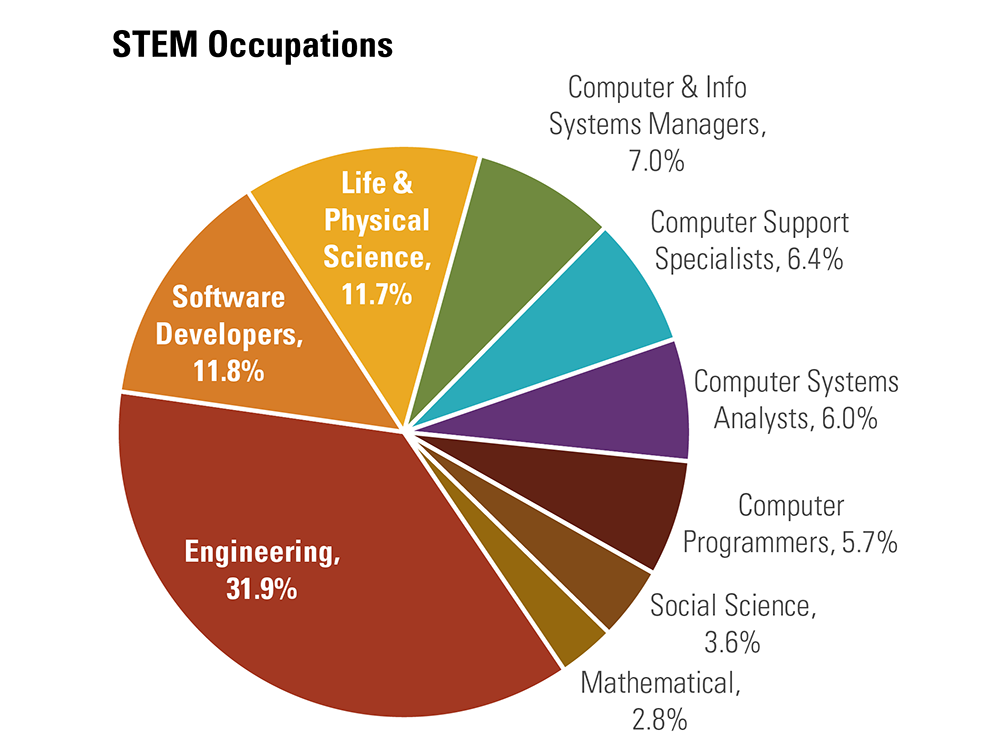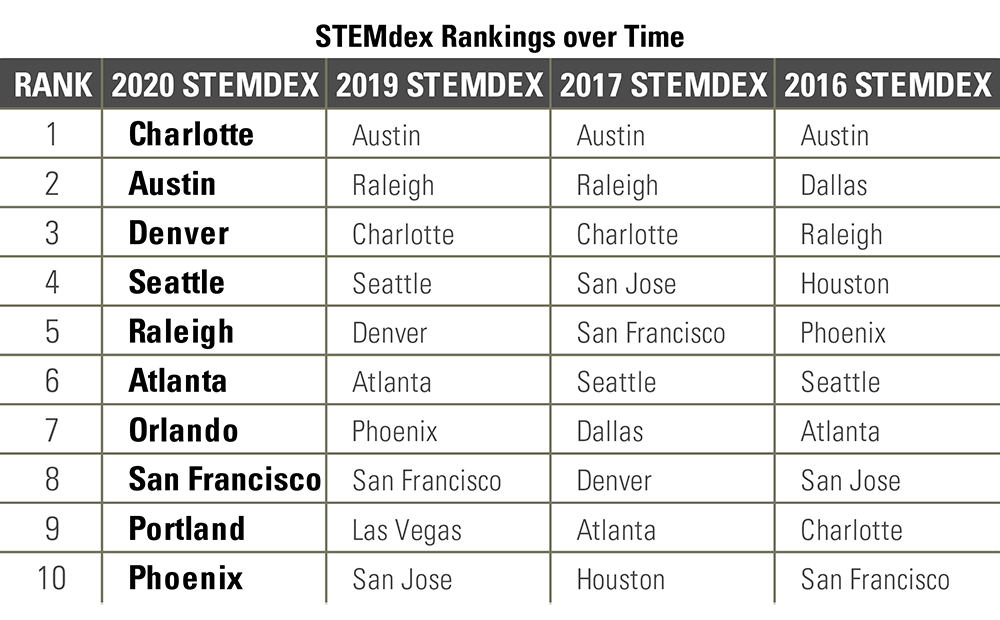Which CRE Markets Top STEM Job Growth Ranking?
RCLCO and CapRidge Partners track the current job momentum and identify future employment trends.
Charlotte, N.C., has pushed past Austin, Texas, in the 2020 STEM Job Growth Index.
Austin previously held the top spot in the STEMdex since its creation in 2016 by a partnership of RCLCO Real Estate Advisors and CapRidge Partners. Rounding out the Top 5 this year were Denver, Seattle and Raleigh, N.C.
The STEMdex tracks science, technology, engineering and mathematics job growth in the country’s 38 largest metro regions. It also predicts future employment patterns based on changing local economies, migration of young households and other factors that have historically been correlated with STEM job growth, such as quality of life and cost of doing business. Understanding where the jobs exist today and using the STEMdex to understand where they may grow in other parts of the U.S. is important to real estate investors, policymakers and local governments. The research report, written by RCLCO Vice President Karl Pischke and Associate Ryan Guerdan, notes STEM jobs will likely play an even more significant role in economic growth in a post-COVID-19 world.
Pischke said much of the research was done before the full effects of the pandemic hit the commercial real estate market and other industries, so it doesn’t fully capture the impacts that will evolve over the coming months.
“Obviously that’s been a major disrupter. It’s something we’ll be following closely and looking to update as some of those effects become clearer,” Pischke told Commercial Property Executive. “There may ultimately be a renewed sense of the importance applied to STEM jobs.”
Among the 38 metros analyzed, the total STEM employment grew at a combined annual average rate of 7.4 percent. STEM occupations are expected to grow at a rate of 76 percent higher than non-STEM jobs nationwide, according to the Bureau of Labor Statistics. STEM jobs are also important to local economies because they pay significantly higher wages. On average, STEM employees make about $84,880 annually, compared to $37,020 for non-STEM occupations, the report notes. STEM jobs have fared better during the COVID-19 crisis because unemployment rates tend to be higher for employees with only a high school degree, and more than 70 percent of STEM workers typically have at least a bachelor’s degree. Going forward, some STEM jobs, particularly those related to public health, may grow. Markets that have a lot of STEM jobs may also recover from the recession much faster, Pischke said.
Making the list
When the STEMdex began in 2016, Charlotte placed ninth in the Top 20. It moved into third place for the next few years until gaining the first place in this year’s ranking.
“Charlotte has continually been a key city particularly for young population growth and interest from young professionals. One of the key metrics assisting Charlotte was a positive movement in the cost of doing business category along with positive movement in key metrics like having an educated workforce,” Pischke said.
In total, RCLCO identified and weighted 26 different indicators they believe best characterize the four major categories—population and economic growth, workforce quality, quality of life and the cost of doing business—to quantify their impact on the STEM job market.
There were other changes to the Top 10 and Top 20 this year. Denver, which placed fifth last year, moved to third place for 2020. Though Colorado did not make the first list in 2016, it placed eighth in 2017. Debuting in the Top 10 for the first time were Orlando, Fla., and Portland, Ore. And appearing on the Top 20 list for the first time, based on growth dynamics, cost and quality of living factors, were Indianapolis (16th), Tampa, Fla., (18th) and San Antonio, Texas (20th). Dallas and Houston moved down this year, with Dallas placing 15th, and Houston, previously ranked at 13th, out of the Top 20 altogether. Also out of the Top 20 this year were Boston and San Diego, Calif., ranked 16th and 20th, respectively, in 2019.
The report notes Orlando, Fla., (7th) and Nashville, Tenn., (12th) are metros to watch for long-term relevance in the STEMdex because both are seeing a significant level of young professional migration and wage growth, along with a relatively affordable cost of living compared to other cities in the index.
“Both cities recently opened Amazon facilities and Orlando is home to Lake Nona’s ‘Medical City’—a hotbed of medical research and other health-care-oriented jobs,” the report stated.
The report also expects the cities in the Top 5 to remain at or near the top in future years of study. Pischke and Guerdan both noted the STEMdex rewards positive demographic and economic trends in a market much more than it penalizes negative growth. When cities move out of the top rankings, it says more about the cities replacing them than the ones departing.
Read the full report on RCLCO’s website.










You must be logged in to post a comment.